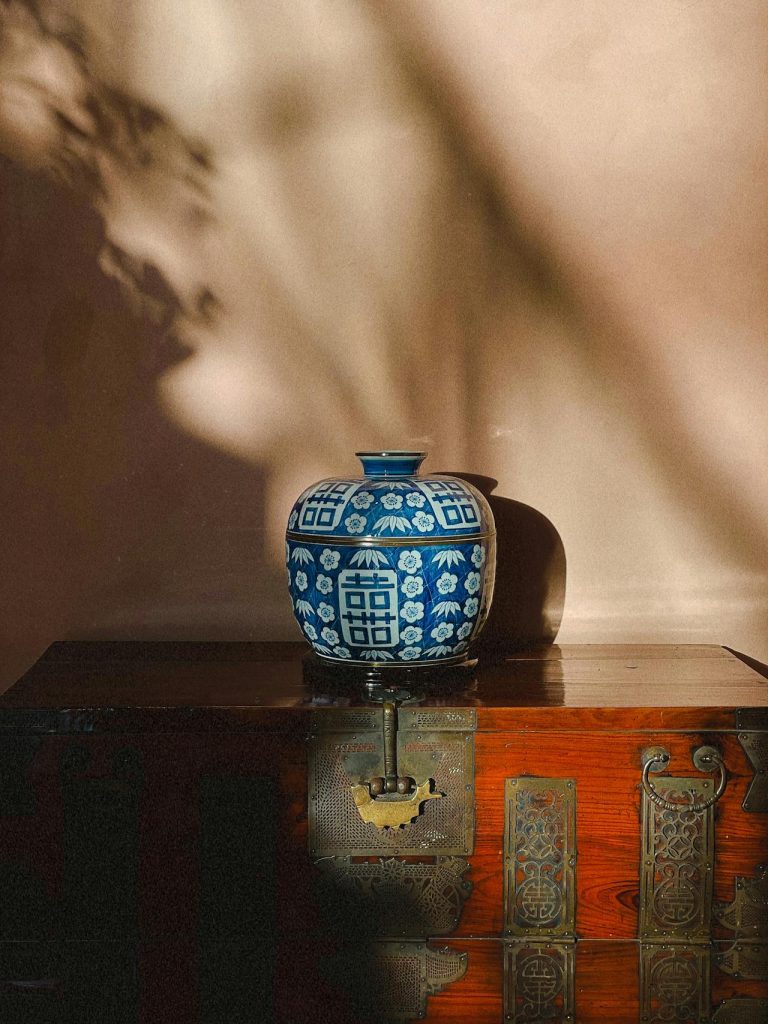Table of Contents
Classical Korean Art: A Harmonious Reflection of Culture and Spirituality
Classical Korean art stands as a testament to the cultural, spiritual, and aesthetic values of a civilization that has flourished for millennia on the Korean Peninsula. Rooted in deep philosophical traditions and a profound respect for nature, Korean art has evolved through its interaction with Buddhism, Confucianism, and indigenous animistic beliefs. This essay explores the defining characteristics of classical Korean art, its historical evolution, and its contributions to the broader realm of East Asian artistic traditions.

Photo by Pexels
The Philosophical Foundations of Korean Art
Korean art is deeply intertwined with the philosophical and spiritual ideologies that shaped the Korean way of life. Confucianism, with its emphasis on social harmony and moral integrity, influenced the restrained elegance and functionality of Korean design. Buddhism, introduced during the Three Kingdoms Period (57 BCE–668 CE), infused Korean art with transcendental ideals, resulting in works that sought to express the essence of enlightenment and compassion. Additionally, the indigenous shamanistic practices celebrated nature and the spiritual world, fostering an aesthetic that emphasized balance, simplicity, and the interconnectedness of all things.
Evolution Through the Ages
The Three Kingdoms Period (57 BCE–668 CE):
The earliest examples of Korean art date back to the Three Kingdoms of Goguryeo, Baekje, and Silla. Murals in Goguryeo tombs, such as those at Anak and Muyongchong, exhibit dynamic depictions of daily life, spiritual rituals, and mythological figures. The art of Baekje is renowned for its refined elegance, particularly in Buddhist sculptures, such as the Maitreya Bodhisattva, which demonstrates both technical mastery and spiritual depth. Silla’s contributions include intricate gold crowns and ornaments that highlight the kingdom’s wealth and craftsmanship.
The Unified Silla Period (668–935):
The unification of the Korean Peninsula under Silla marked a golden age for Buddhist art. The Seokguram Grotto, a UNESCO World Heritage Site, epitomizes this period’s artistic achievements, blending architectural ingenuity with serene sculptures of the Buddha and bodhisattvas. The Bulguksa Temple, with its harmonious layout and exquisite stone pagodas like Dabotap and Seokgatap, reflects the spiritual aspirations and architectural sophistication of the era.
The Goryeo Dynasty (918–1392):
The Goryeo Dynasty is celebrated for its celadon pottery, considered among the finest in the world. Known for its translucent glaze and elegant designs, Goryeo celadon often featured motifs of nature, such as lotus flowers, cranes, and willow trees, symbolizing purity and peace. Buddhist art flourished during this period, producing magnificent sutra paintings, illuminated manuscripts, and the iconic Tripitaka Koreana, a complete collection of Buddhist scriptures carved onto wooden blocks.
The Joseon Dynasty (1392–1897):
During the Joseon era, Confucianism became the dominant ideology, influencing a shift toward practicality and simplicity in art. Ink paintings, calligraphy, and ceramics exemplified the restrained aesthetic of this period. Landscapes, such as those by Jeong Seon, showcased Korea’s natural beauty with an emphasis on realism and a unique “true-view” style that departed from the idealized depictions of Chinese painting. White porcelain, often adorned with blue underglaze, became a hallmark of Joseon pottery, embodying the Confucian virtues of purity and modesty.
Characteristics of Classical Korean Art
- Naturalism:
Korean art often reflects a deep reverence for nature. Artists sought to capture the spirit of the natural world, blending human creativity with organic forms and motifs. - Simplicity and Elegance:
The principle of jeongseon (refined simplicity) is a recurring theme in Korean art. Whether in the minimalist design of white porcelain or the flowing lines of Buddhist sculptures, Korean artists favored understated beauty over ostentation. - Spiritual Resonance:
Buddhist art in Korea is notable for its spiritual intensity, aiming to inspire contemplation and a sense of the divine. This quality is evident in the serene expressions of Buddhist statues and the meditative compositions of temple murals. - Cultural Synthesis:
While influenced by Chinese and Central Asian traditions, Korean art developed a distinct identity through innovation and adaptation. This synthesis is particularly evident in the unique celadon glaze techniques and the “true-view” landscape paintings.
The Legacy of Classical Korean Art
Classical Korean art has left an indelible mark on East Asian culture. Its emphasis on harmony, spirituality, and natural beauty continues to resonate in modern art and design. Korean celadon inspired ceramic traditions in Japan, while its Buddhist sculptures influenced religious art throughout Asia. Today, the legacy of classical Korean art is preserved in museums, temples, and historical sites, attracting scholars and art enthusiasts worldwide.
Conclusion
Classical Korean art is more than a reflection of historical and cultural developments; it is a manifestation of the Korean people’s enduring connection to nature, spirituality, and community. By balancing simplicity with sophistication and tradition with innovation, Korean artists have created works that transcend time and place, offering profound insights into the human experience. Through its rich legacy, classical Korean art remains a vital source of inspiration and a cornerstone of global cultural heritage.


No responses yet